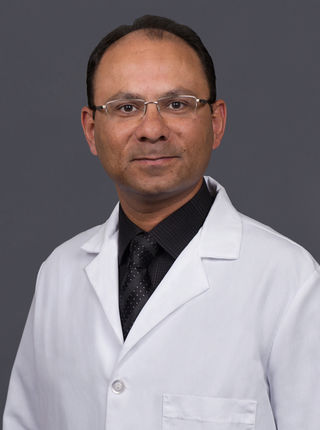M. Raza Zaidi, PhD
Associate Professor, Cancer and Cellular Biology
Associate Professor, Fels Cancer Institute for Personalized Medicine

- Contact Information
-
- About Me
-
Research Interests
Gene-Environment-Microenvironment Interactions in Melanomagenesis
The overarching goal of my research program is to elucidate the molecular mechanisms of ultraviolet radiation (UVR)-induced melanomagenesis.
The major etiological risk factor for the majority of melanomas has long been known to be UVR, yet the underlying mechanisms largely remain elusive. The hunt for melanoma-initiating genes has remained focused on UVR-induced DNA mutations. However, several studies have fueled the notion that mechanisms other than direct DNA damage are also important for UVR-induced initiation and progression of melanoma. To find clues to these mechanisms, we profiled the melanocytic gene expression response to UVR exposure while in their normal skin microenvironment (Nature 469:548). To circumvent the considerable challenge of studying a cell type in vivo that constitutes a tiny fraction of the mammalian skin, we developed a mouse model in which melanocytes can be both imaged in vivo and highly purified by virtue of tetracycline-inducible, melanocyte-specific GFP expression (iDct-GFP mice). This novel mouse model provides an invaluable tool to explore melanocyte and melanoma biology while residing within their natural microenvironment.
We have shown that the role of UVR in melanomagenesis involves not only UVR-induced DNA damage, but also how altered gene expression in exposed melanocytes drives interactions with elements of the microenvironment to escape destruction. Our results suggest that UV insult stimulates an intricate interplay between melanocytes and the skin microenvironment. It is clear that the alterations in melanocytic gene expression profile following UVR exposure stem from a combination of the direct UVR-induced effects on melanocytes and microenvironmental cues. We intend to tease out these intrinsic and extrinsic mechanisms to delineate the important molecular players in UVR-induced melanomagenesis.
Project 1: Role of the microenvironmental cytokine Interferon-gamma in initiation and progression of UV-induced melanoma
Project 2: The genomic and epigenomic mechanisms of UV-induced melanomagenesis
- Education, Training & Credentials
-
Educational Background
- Postdoctoral Research Fellowship, Laboratory of Cancer Biology and Genetics, National Cancer Institute, National Institutes of Health, Bethesda, MD, 2012
- Postdoctoral Fellowship, Columbia University College of Physicians and Surgeons, New York, NY, 2004
- PhD, Biochemistry and Molecular Biology, Robert Wood Johnson Medical School, Rutgers University, Piscataway, NJ, 2003
- BA, Biological Sciences, Rutgers University, New Brunswick, NJ, 1994
- Publications
-
Digital Bibliography
